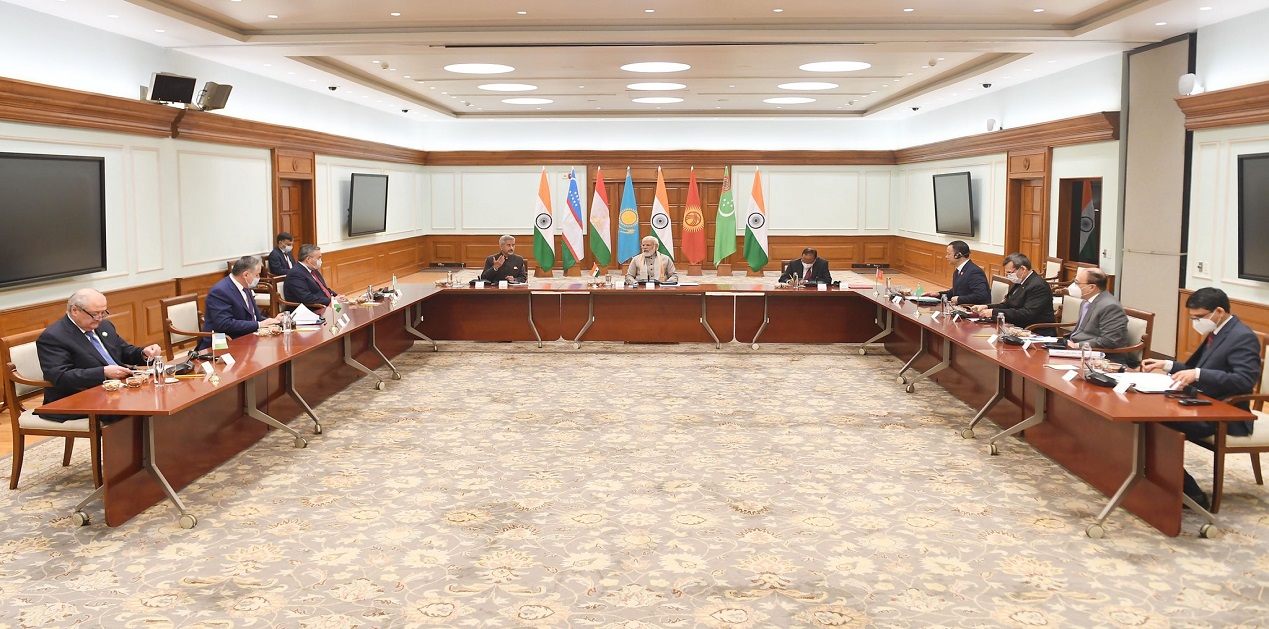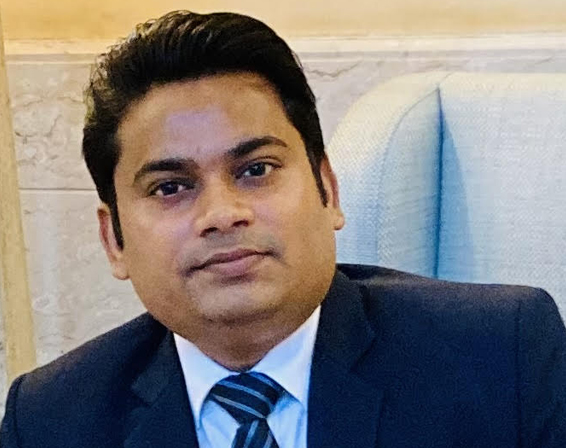Background
India’s Prime Minister Narendra Modi will hold the first-ever India-Central Asia Leaders Summit in a virtual format on January 27, 2022. This summit will bring together the heads of state of Kyrgyzstan, Kazakhstan, Tajikistan, Uzbekistan, and Turkmenistan.[1] New Delhi had previously invited five leaders of Central Asian Republics as Chief Guests to the Republic Day Parade. However, due to a new COVID-19 wave, the Indian government decided not to have any foreign guests at the republic day celebration. This summit is highly significant owing to the changing regional and domestic environment in Central Asia. Also, the success of the India-Central Asia leaders’ summit will be another milestone in India’s Central Asia policy.
India shares close cultural and historical relations with the Central Asian region. India-Central Asia was connected till India’s partition in 1947. The animosity between India and Pakistan became a major hurdle in India’s access to the Central Asian region due to a lack of direct connectivity. Central Asia’s proximity with Afghanistan, its vast hydrocarbon resources, and the potential market for Indian goods are all key factors in India’s outreach to this region. Despite multiple convergences of interests, India-Central Asia relations remained below the potential. However, India’s Central Asia policy was reinvigorated with PM Modi’s visit to this region in July 2015 and India’s permanent membership in Shanghai Cooperation Organization (SCO) in 2017.
Russia and China are the two major players in Central Asia. Russia is the security manager, while Beijing dominates the economic spheres of these countries mainly through its energy imports and Belt and Road Initiatives (BRI). In order to elevate the strategic ties with the Central Asian republics, India started a multilateral dialogue at the Foreign Ministers level, which also included the participation of Afghanistan. The third edition of the India-Central Asia Dialogue was held in December 2021 in New Delhi. EAM Dr. Jaishankar hosted this dialogue, and foreign ministers of five Central Asian countries participated in this dialogue.[2] They also met with PM Modi during their visit to India. The post-Taliban takeover of Kabul; situation in Afghanistan is the focus of India’s interaction with the Central Asian leaders.
Why is this Summit Important?
This year commemorates the 30th anniversary of India and Central Asia establishing diplomatic ties. Developments in Afghanistan and related security challenges are common areas that need discussion between India and Central Asia leaders. The convening of this summit reflects India’s increased involvement with Central Asian countries that are part of ‘India’s Extended Neighbourhood.’ The summit is especially notable since it will be the sole meeting of leaders of five Central Asian countries with any other country.
What should be on the agenda?
I. Prioritising Connectivity
India has invested in Iran’s Chabahar port and is a member of the International North-South Transport Corridor (INSTC) to address connectivity issues. It is also a signatory to the TIR Convention and the Ashgabat Accord. Landlocked Central Asian countries have indicated an interest in participating in India’s connectivity initiatives. Integrating Chabahar with INSTC is a strategic step in this regard. However, with the change of government in Kabul, India’s access to the region through Afghanistan is in jeopardy. India could investigate Iran’s hinterland connectivity, given the infrastructure is already in place. In such a circumstance, Turkmenistan’s position becomes critical since India can use Turkmenistan to access other Central Asian nations until a clear policy on Afghanistan is prepared. A multilateral discussion on this issue between India and Central Asia may yield significant results.
II. Enhancing Trade and Investments
Currently, the level of economic cooperation between India and Central Asia is below its potential. India’s exports to Central Asia totalled 658.52 USD million in 2020-21, while imports from the region were 826.43 USD million in the same year.[3] In order to enhance the bilateral trade, India’s Central Asian export basket must be expanded. IT, communications and pharmaceuticals are the most promising sectors from the point of view of enhancing trade relations. India must also utilise its economic and technological capabilities to expand this limited commercial relationship with Central Asian nations. This would add strategic value to the India-Central Asia policy and increase goodwill between the two regions. Moreover, India must shift its attention from an import-oriented approach to creating a manufacturing base in Central Asia, and Indian firms must be encouraged to invest in Central Asia. Development of air corridors is also a viable option of enhancing trade between the two regions.
III. Joint Defence Production and Military Training
India’s military ties with Central Asian countries are important, although they are significantly more limited. Military education, infrastructure, and training are the primary areas of collaboration with the region. India still has lot of opportunities to expand its defence cooperation with Central Asian countries. As a result, joint defence production between India and Central Asia can be encouraged. The military medicine agreement between India and Uzbekistan might be expanded to include additional Central Asian republics. India may also exchange defence expertise and share experience with its Central Asian neighbours. Tajikistan, Uzbekistan, and Turkmenistan all have a direct border with Afghanistan, making them subject to security concerns from across the border. Border security cooperation may also be fostered as part of India-Central Asia defence cooperation. India-Central Asia joint military training can also be encouraged.
IV. Educational Cooperation
India-Uzbekistan cooperation in education can be an example and may be expanded to other Central Asian countries. Indian universities like Amity, Sharada and Sambhram Institute of Technology operate in different provinces of Uzbekistan. This could be expanded to other Central Asian countries. India may also suggest establishing an India-Central Asia institute in any of these countries for a joint study on the issues and prospects of bilateral relations.
V. Health Cooperation
India is a popular destination for medical tourism for Central Asian countries due to its cheap and highly efficient medical facilities. Conversely, these countries are a popular destination for medical students from India. Moreover, during COVID-19, India provided COVID-19 vaccines and essential medicines to these countries and received medical supplies from Kazakhstan and Uzbekistan during the second wave of COVID-19 in India in April-May 2021.[4] Another important development of health cooperation is the mutual recognition of Covid-19 vaccination certificates with India.[5] This sector has a lot of prospects for further development.
Conclusion
Relations between India and Central Asia have soared in recent years. India’s engagement with Central Asian republics has been steady at multiple levels since Prime Minister Modi’s visit to the region in 2015. A variety of new initiatives have been undertaken, with some promising results. The India-Central Asia dialogue, establishment of an India-Central Asia Business Council, as well as the forthcoming leaders’ summit are some of the significant steps that will undoubtedly strengthen India’s relations with Central Asia.
References
[1] ‘The First Meeting of the India-Central Asia Summit’, Press Releases, Ministry of External Affairs, Government of India, January 19, 2022. https://www.mea.gov.in/press-releases.htm?dtl/34759/The+First+Meeting+of+the+IndiaCentral+Asia+Summit
[2] ‘Joint Statement of the 3rd meeting of the India-Central Asia Dialogue’ Ministry of External Affairs, Government of India, December 19, 2021. http://mea.gov.in/bilateral-documents.htm?dtl/34705/Joint+Statement+of+the+3rd+meeting+of+the+IndiaCentral+Asia+Dialogue
[3]Department of Commerce, Export Import Data Bank, https://tradestat.commerce.gov.in/eidb/ergn.asp
[4]Debasis Bhattacharya, ‘India-Central Asia relations: Growing convergence brings relations to strategic heights’, January 11 2022 , Raisina Debates, ORF. https://www.orfonline.org/expert-speak/india-central-asia-relations/
[5] ‘Mutual recognition of Covid-19 vaccination certificates with India’, Ministry of External Affairs, Government of India. https://www.mea.gov.in/Mutual-recognition-Covid-vaccination-certificates.htm
(The paper is the author’s individual scholastic articulation. The author certifies that the article/paper is original in content, unpublished and it has not been submitted for publication/web upload elsewhere, and that the facts and figures quoted are duly referenced, as needed, and are believed to be correct). (The paper does not necessarily represent the organisational stance... More >>
Image Source: https://img.ap7am.com/froala-uploads/20211220fr61c0a35e10952.jpg











Post new comment